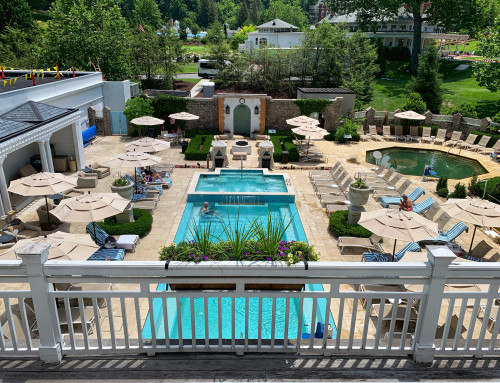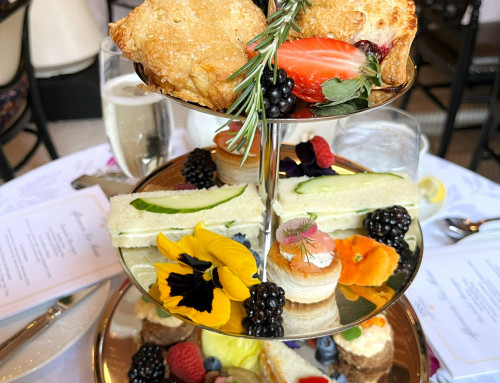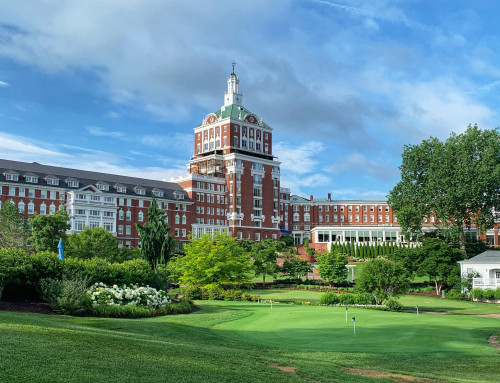One of the most romantic châteaux anywhere in France elegantly straddles the Cher River in the Indre-sur-Loire region, a few hours southwest of Paris. Fittingly nicknamed the Château des Dames (The Château of Women), Chenonceau has been maintained through the centuries by seven extraordinary women with reputations for having iron fists in velvet gloves – a nod toward their feminine pursuits of beauty, luxury, and competition (and of course, men, often kings) – but also, toward their resolve to preserve this emblematic place through times of war and revolution.
A castle has stood on this location since the eleventh century, but was torched in 1412 due to the owner’s treasonous behavior. Even though Jean Marques kept the property and rebuilt, his indebted heirs sold the land in 1513 to King Charles VIII’s chamberlain who promptly tore down the medieval structure to rebuild in the new fangled Renaissance style that was seeping into French culture from Italy. The oldest remaining part of Chenonceau, the Tour de Marques, dates to the fourteenth century.
While the Chamberlain was away fighting in the Italian Wars, it was his wife, Katherine Briçonnet, who oversaw the construction of a sumptuous new château on the foundations of the Marques’ medieval mill. This is the central block of the building, which now houses a superb collection of Great Masters paintings, Renaissance artworks, and a wonderful collection of rare sixteenth century Flemish tapestries.
By 1547, the château was once again in the possession of the Crown. Henry II’s illustrious mistress, Diane de Poitiers was given the place to do with that she will – much to the dismay of his wife, Catherine de Médicis. Diane was responsible for adding the long gallery that spans five arches into the serene Cher River. She also oversaw the design of her namesake gardens. The exquisite triangular flower gardens were contained by massive stone walls, protecting it from the flooding Cher, which also happened to feed the surrounding moat.
When Henry died, his Queen took the opportunity to seize the jewel of the Loire and send Diane packing to the neighboring Château Chaumont-sur-Loire- a total looker by our standards, but still a downgrade for the Mistress of Chenonceau. Queen Catherine held legendary parties in the grand gallery built by her predecessor, but was not to be out down and commissioned her own architectural touches to the building. She continued the arched gallery to span the entire way across the river, spent lavishly on decorations, and hosted France’s first ever fireworks display to celebrate the ascension of her son to the throne.
The competition between Catherine and Diane spilled over into the gardens as well, where the Queen set out to design even more magnificent gardens, which included rose and orange trees, flower and vegetable gardens, and a yard meant for silk raising, an industry that was introduced to France by Catherine de Médicis.
Chenonceau passed to her daughter-in-law upon Catherine’s death, who at the assassination of her husband, King Henry III sucked a bit of the life from the otherwise party-riddled château. Tradition holds she covered the walls with black drapes stitched with skulls and crossbones, while wandering aimlessly through the halls.
After its succession through the families of several more prominent families, Chenonceau fell into a sad state of disrepair until 1733 when it was snapped up by a wealthy squire named Claude Dupin, whose wife Louise breathed new life into the château. Her entertainment of the enlightened thinkers of the day- Voltaire, Montesquieu, Rousseau – helped to eventually save Chenonceau from the fate that many other royal palaces and homes suffered. Her removing the ‘x’ from the original royal spelling of Chenonceaux sat well with the local villagers – or so tradition states. And thanks to her bringing attention to its role as a valuable crossing on the Cher River, prevented it from being destroyed by Revolutionary Guards. Iron fists, velvet gloves, indeed.
In the following two centuries, Chenonceau was purchased by a few wealthy families for their daughters- one who, in good Médicis form, threw spectacular parties. Another, the Menier family- who just happen to be chocolate moguls- bought the dilapidated, flood ravaged structure in 1913 and allowed it to be used during World War II as a means of escape from Nazi-occupied France, which just happened to be on one side of the Cher River. Since it’s restoration in 1951, Château de Chenonceau has become the most visited privately owned monument in France. The relatively new, on-site wax museum documents the seven women pivotal in the development and protection of this emblematic structure.
In 2013, Château de Chenonceau celebrated its 500th anniversary and continues to receive upward of 800,000 visitors per year. You’ll find the easy 20 or 30-minute drive along the Loire a scenic one from Tours, Blois, Orleans, and Amboise. Bundle Chenonceau in with another visit to the châteaux at Chambord, Chaumont-sur-Loire, Amboise, or Blois for a full day of Renaissance resplendence.If you can visit during summer evening hours, a light and sound show, known as a lumière,illuminate the exterior walls sometimes with music or a telling of the story of Chenonceau. For a unique perspective, rent a kayak or canoe and paddle along the Cher River and through the arches. It’s a wonderful way to get up close and personal.







Leave A Comment